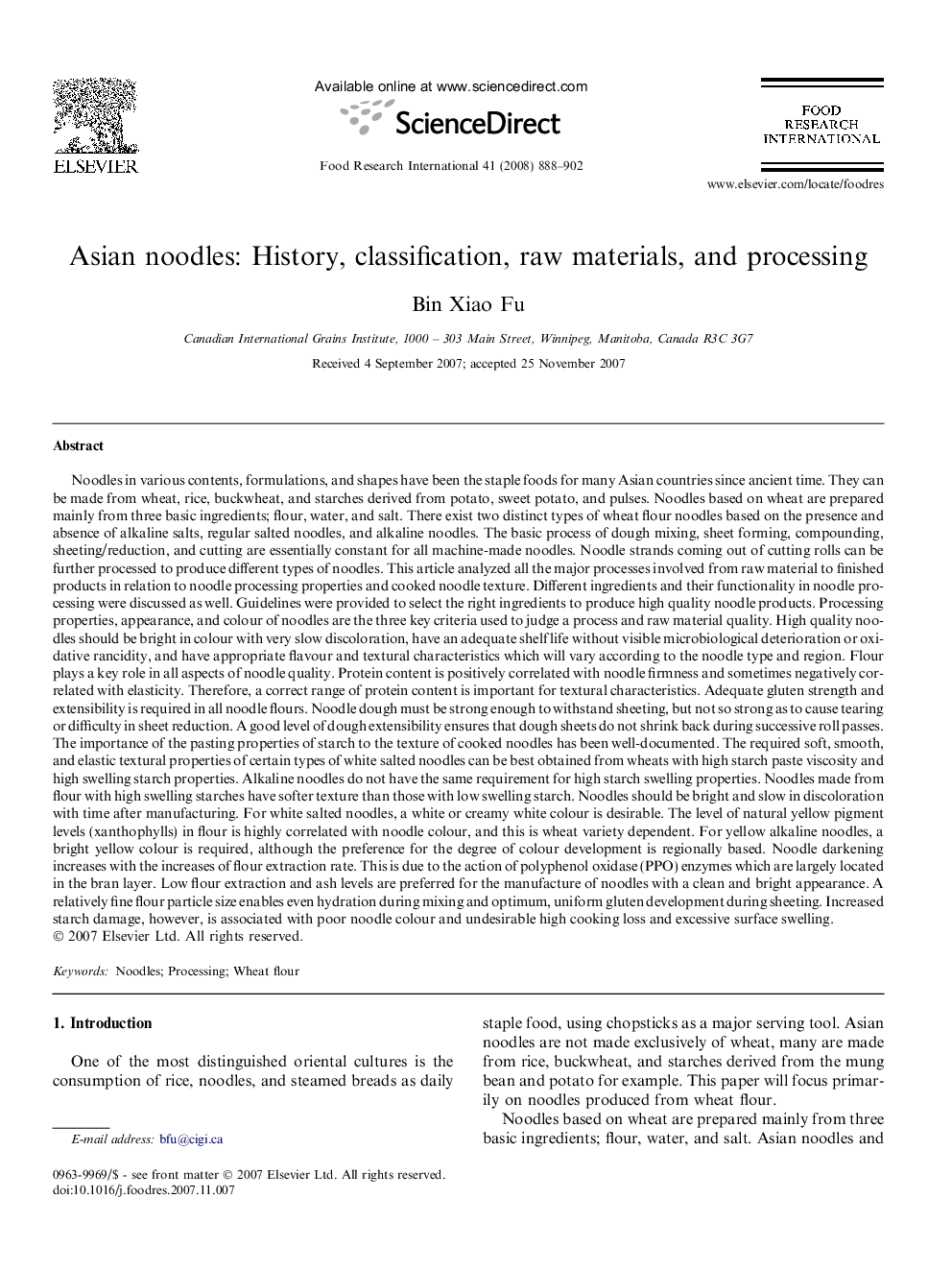| کد مقاله | کد نشریه | سال انتشار | مقاله انگلیسی | نسخه تمام متن |
|---|---|---|---|---|
| 4562506 | 1330718 | 2008 | 15 صفحه PDF | دانلود رایگان |

Noodles in various contents, formulations, and shapes have been the staple foods for many Asian countries since ancient time. They can be made from wheat, rice, buckwheat, and starches derived from potato, sweet potato, and pulses. Noodles based on wheat are prepared mainly from three basic ingredients; flour, water, and salt. There exist two distinct types of wheat flour noodles based on the presence and absence of alkaline salts, regular salted noodles, and alkaline noodles. The basic process of dough mixing, sheet forming, compounding, sheeting/reduction, and cutting are essentially constant for all machine-made noodles. Noodle strands coming out of cutting rolls can be further processed to produce different types of noodles. This article analyzed all the major processes involved from raw material to finished products in relation to noodle processing properties and cooked noodle texture. Different ingredients and their functionality in noodle processing were discussed as well. Guidelines were provided to select the right ingredients to produce high quality noodle products. Processing properties, appearance, and colour of noodles are the three key criteria used to judge a process and raw material quality. High quality noodles should be bright in colour with very slow discoloration, have an adequate shelf life without visible microbiological deterioration or oxidative rancidity, and have appropriate flavour and textural characteristics which will vary according to the noodle type and region. Flour plays a key role in all aspects of noodle quality. Protein content is positively correlated with noodle firmness and sometimes negatively correlated with elasticity. Therefore, a correct range of protein content is important for textural characteristics. Adequate gluten strength and extensibility is required in all noodle flours. Noodle dough must be strong enough to withstand sheeting, but not so strong as to cause tearing or difficulty in sheet reduction. A good level of dough extensibility ensures that dough sheets do not shrink back during successive roll passes. The importance of the pasting properties of starch to the texture of cooked noodles has been well-documented. The required soft, smooth, and elastic textural properties of certain types of white salted noodles can be best obtained from wheats with high starch paste viscosity and high swelling starch properties. Alkaline noodles do not have the same requirement for high starch swelling properties. Noodles made from flour with high swelling starches have softer texture than those with low swelling starch. Noodles should be bright and slow in discoloration with time after manufacturing. For white salted noodles, a white or creamy white colour is desirable. The level of natural yellow pigment levels (xanthophylls) in flour is highly correlated with noodle colour, and this is wheat variety dependent. For yellow alkaline noodles, a bright yellow colour is required, although the preference for the degree of colour development is regionally based. Noodle darkening increases with the increases of flour extraction rate. This is due to the action of polyphenol oxidase (PPO) enzymes which are largely located in the bran layer. Low flour extraction and ash levels are preferred for the manufacture of noodles with a clean and bright appearance. A relatively fine flour particle size enables even hydration during mixing and optimum, uniform gluten development during sheeting. Increased starch damage, however, is associated with poor noodle colour and undesirable high cooking loss and excessive surface swelling.
Journal: Food Research International - Volume 41, Issue 9, November 2008, Pages 888–902